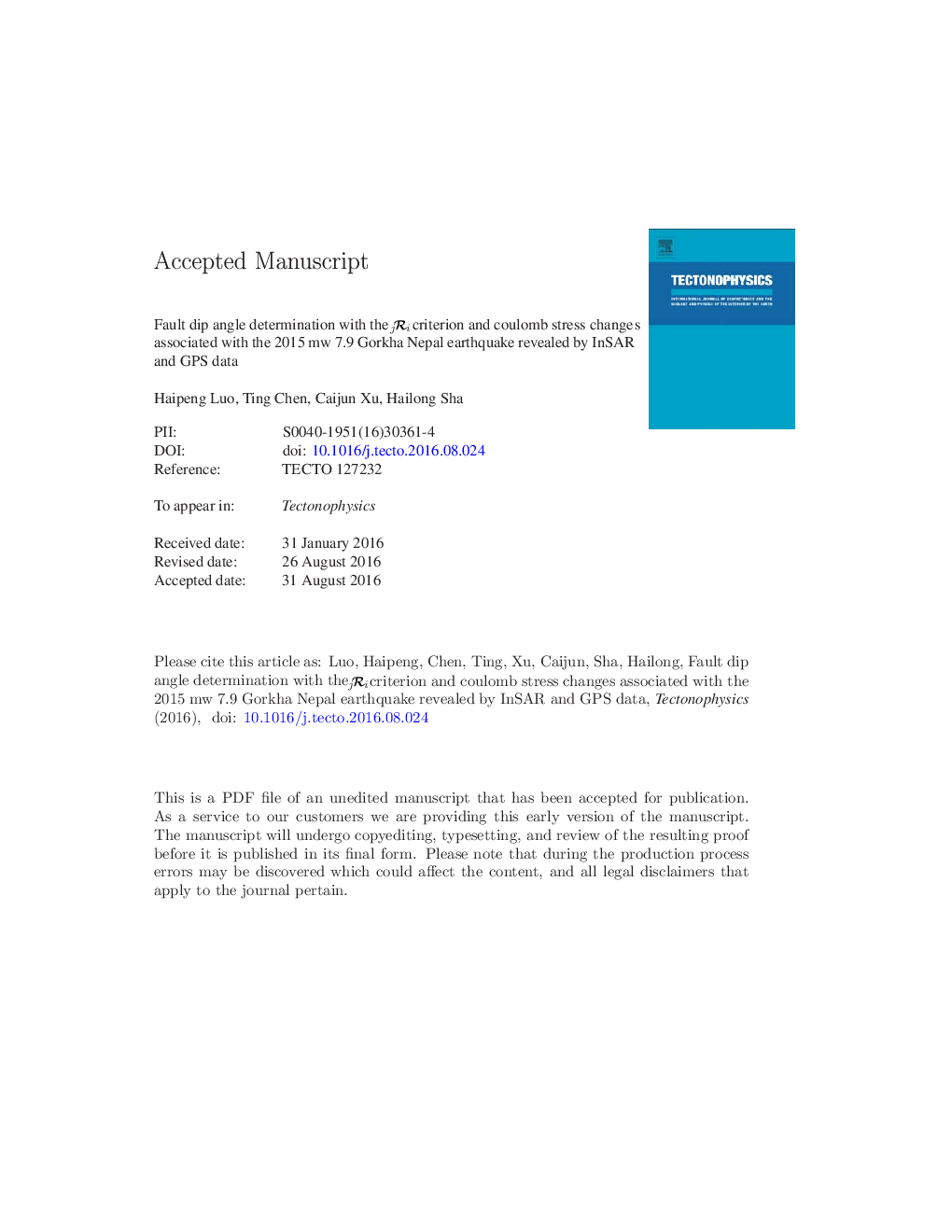| Article ID | Journal | Published Year | Pages | File Type |
|---|---|---|---|---|
| 5781608 | Tectonophysics | 2017 | 29 Pages |
Abstract
Minimizing data misfit has been widely used in geodetic determination of fault dip angle, however, it ignores the contribution from data noise. Here, we use the jâi criterion, which takes into account both data misfit and the contribution from data noise, to determine dip angle. Synthetic tests show dip angle estimates with the jâi criterion are more accurate and robust than those with data misfit minimization. We applied this jâi criterion to the determination of the dip angle of the 2015 Mw 7.9 Gorkha Nepal earthquake using Interferometric Synthetic Aperture Radar (InSAR) and Global Positioning System (GPS) data. The results show that the event ruptured to the north of Kathmandu with a maximum slip value of 5.8 m and a dip angle of 9.5°. We also calculated the coulomb failure stress changes resolved onto the receiver faults that are generally consistent with the fault geometry of this event, suggesting the possible triggering relation to aftershocks with low dip angles and a zone of seismic potential located to the west of the rupture zone.
Related Topics
Physical Sciences and Engineering
Earth and Planetary Sciences
Earth-Surface Processes
Authors
Haipeng Luo, Ting Chen, Caijun Xu, Hailong Sha,
